Post Rape Care (PRC) Form
Overview
It is a medical document filled when attending to the survivor. The form allows space for history taking, documentation, and examination. It facilitates the filling of the P3 form by ensuring that all relevant details are available and were taken at the first contact of the survivor with a health facility.
The PRC form strengthens the development of a chain of custody of evidence by having triplicate forms signed. It can be filled by a doctor, clinical officer, or nurse.
The original form is given over to the police and used in court as evidence. The second copy is left with the survivor while the third copy remains in the hospital and is preserved among hospital records.
Structure
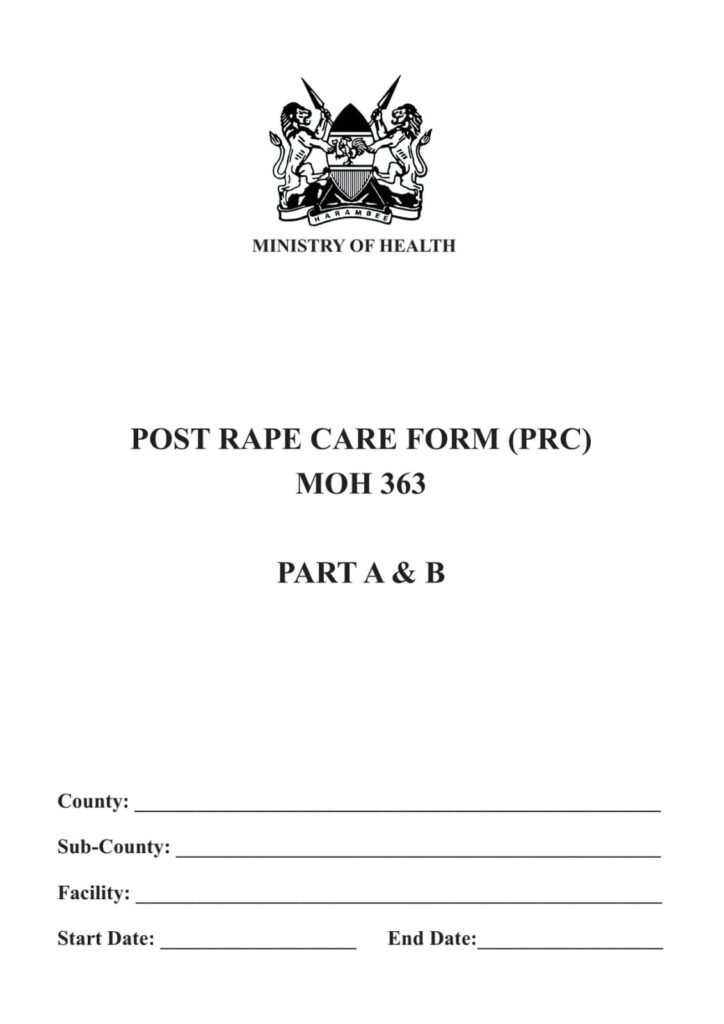
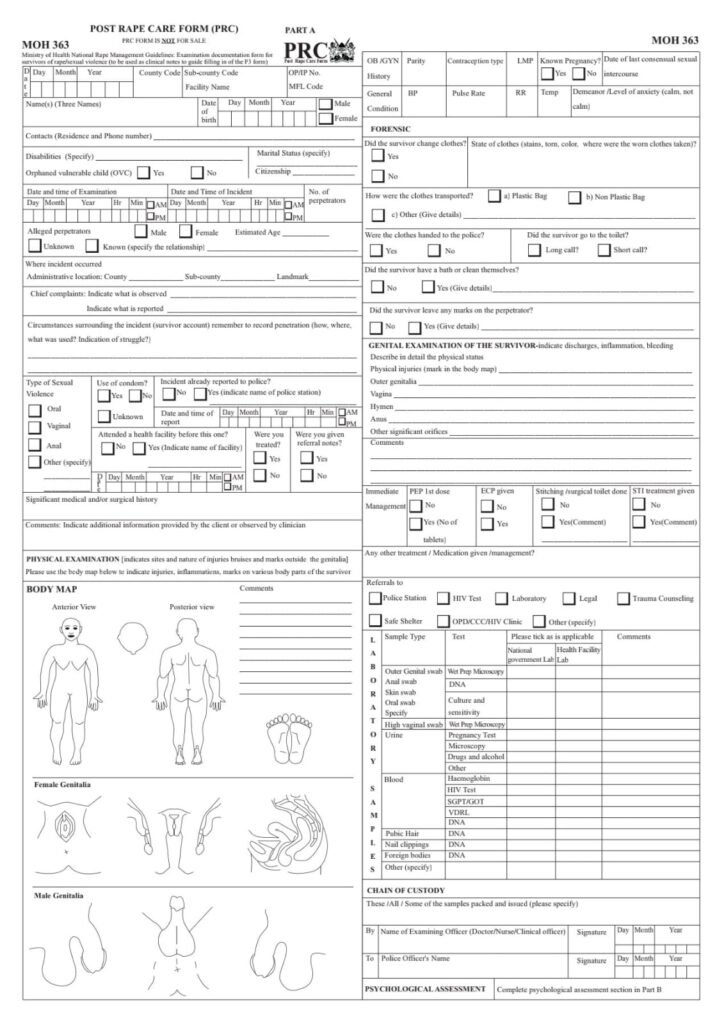
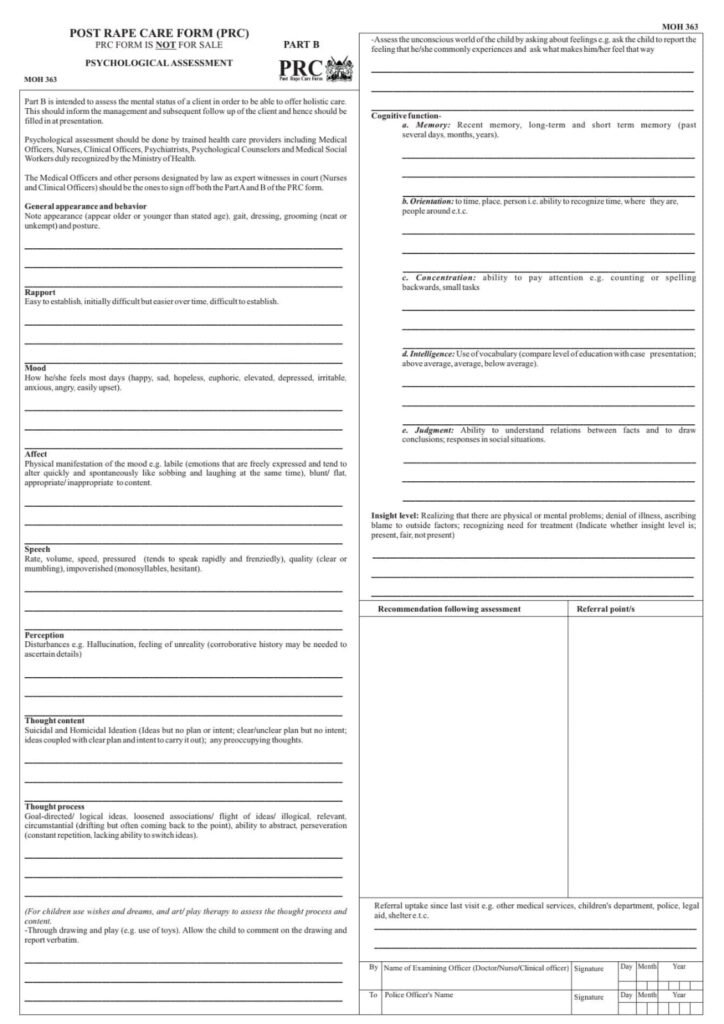
P3 Form
Overview
It is a legal document (also referred to as the Kenya Police Medical Examination Form) found in police stations that doctors fill in during examination of rape survivors and is used as medical evidence during investigation and prosecution processes to prove, corroborate or at times disprove the occurrence of the incident of sexual violence.
It shows the extent of external and internal injuries be they sexual and/or physical. The P3 form is a general form filled by victims of assault as such it is not specific to sexual violence cases. The medical officer who fills the P3 form or their representative will be expected to appear in court as an expert witness and produce the document in court as an exhibit.
Structure
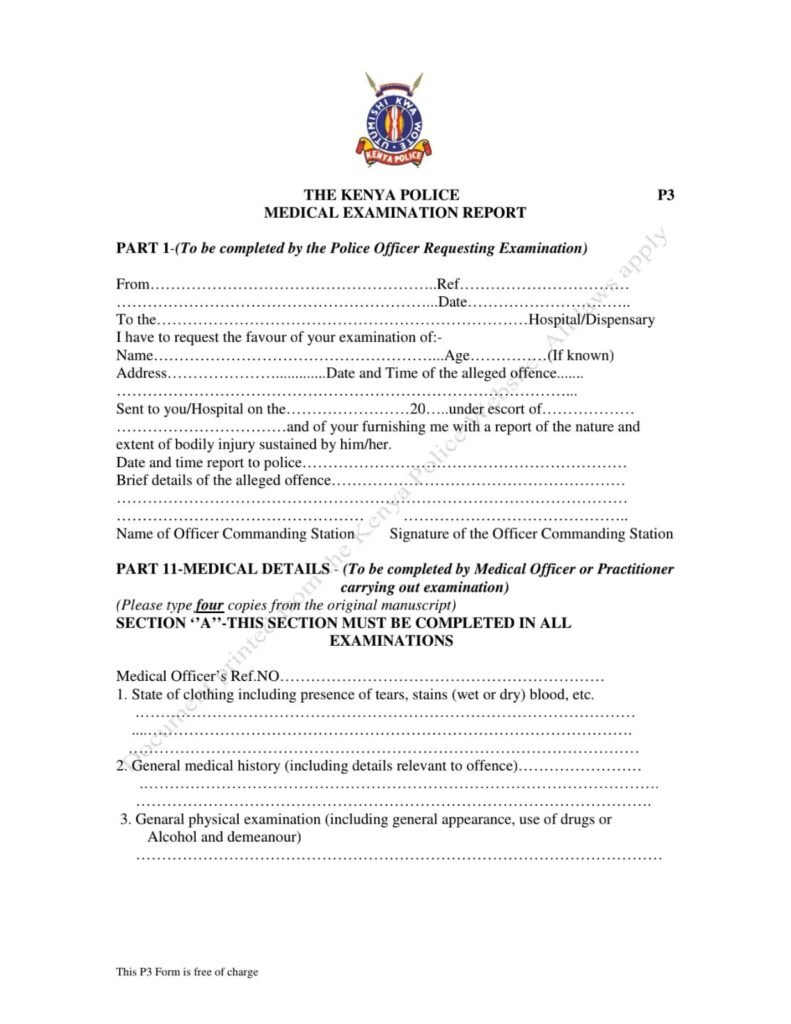

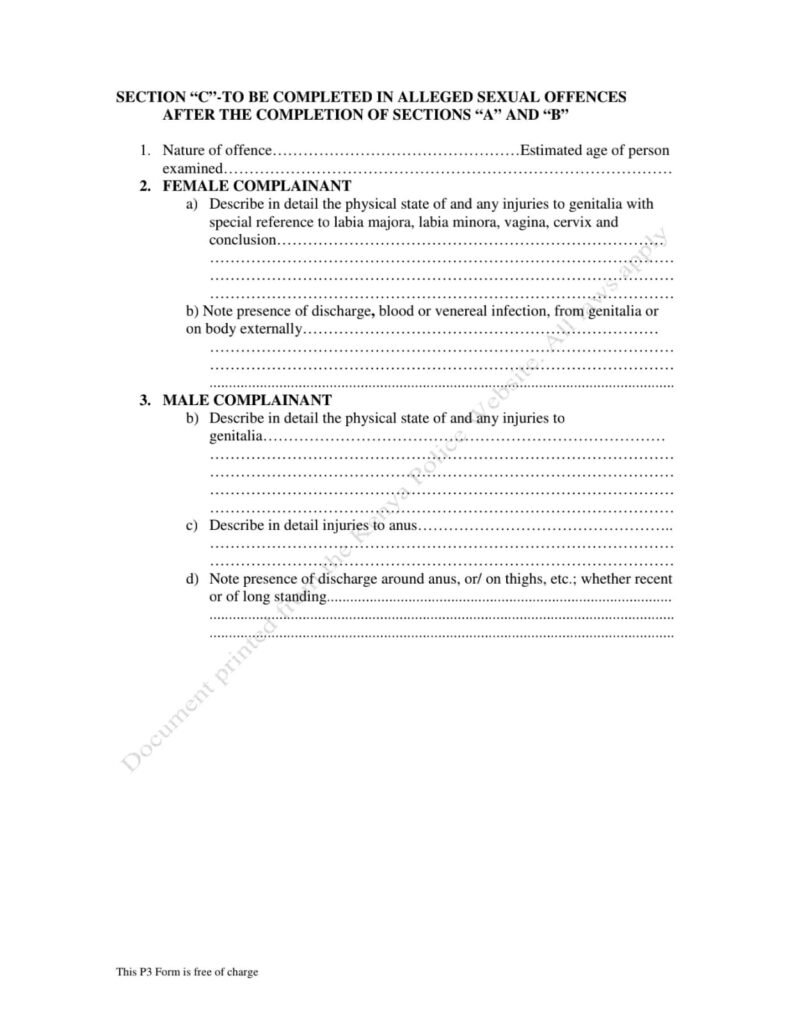
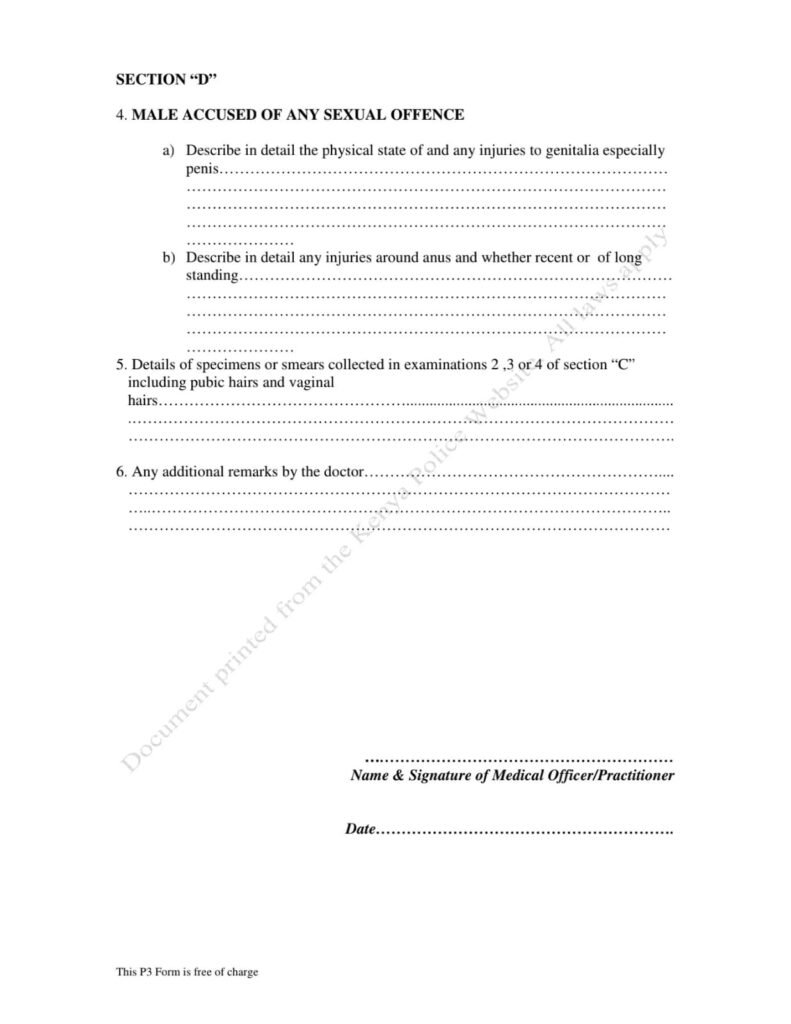
Specimen collection
The term specimen refers to any evidence that is retrieved from the survivors of sexual violence. Locard’s exchange principle states that, every contact leaves a trace:
‘Wherever he steps, whatever he touches, whatever he leaves, even unconsciously, will serve as a silent witness against him. Not only his fingerprints or his footsteps, but his hair, the fiber from his clothes, the glass he breaks, the tool mark he leaves, the paint he scratches, the blood or semen he deposits or collects.’
| Specimen | Method of preservation | Test for | Purpose |
|---|---|---|---|
| Mouth swab | Air dry and store in a clean dry bottle with a screw top | Sperm DNA | Identify victim/assailant |
| Urine of both victim and suspect | Clean dry bottle, refrigerated | Sperm, alcohol and drugs | Confirm recent sexual intercourse and whether the victim/assailant uses drugs |
| Pubic hair/head hair | Pick the hair using non-powdered gloves and store in envelope | DNA transfer | Identify the assailant/victim |
| Foreign material | Hand pick using non-powdered gloves and store in an envelope | Materials found at incident for evidence analysis | Corroborative evidence |
| Blood | Collect in a dry sterile bottle or transfer onto sterile cotton gauze and air dry | DNA, alcohol and drugs | Identify the assailant/victim. Confirm whether either abuses drugs (ability to consent) |
| Semen | Dry semen stained clothing in open air. Do not dry using artificial heat, sun or open fire. Preserve in khaki paper | Sperm DNA | Identify the assailant |
| Fingernail scrapping or clippings | Pick using non-powdered gloves and store in an envelope | DNA | Identify victim and assailant |
| Blood stained clothes | Dry in open air. Avoid other means of drying. Preserve in a khaki envelope | DNA, alcohol and drugs | Identify victim/assailant |
| Bite marks | Plasticine | Dental impression | Identify assailant |
Chain of custody
It is defined as the procedure involved in documentation, tracking, and protecting of evidence on its journey from a crime scene to the courtroom. Also refers to a paper trail where the movement of evidence is traceable through the different persons in the chain of sample collection, analysis, investigation and litigation.
Also known as the chain of evidence.
If the chain of custody has been broken or tampered with, evidence can be ruled as inadmissible, meaning it cannot be presented or believed to be authentic in a court of law.
- How to ensure chain of custody is upheld
- Avoid contamination of evidence
- Collect forensic specimen as soon as possible
- Ensure that specimens are packed, stored and transported correctly.
- All specimens must be clearly labelled with the survivor’s name and date of birth, the health care provider name, the type of specimen, and the date and time of collection.
- Only authorised people should have access to the evidence
- Once a piece of evidence has been collected, subsequent handling should be recorded.

